Are you a fan of mushrooms? Mushrooms are one of the healthiest food sources on the planet. Many are loaded with vitamins and minerals. Others have the potential to treat a number of different illnesses. There are many types of healthy mushrooms out there that are great for a wide range of health needs.
Do you have trouble eating mushrooms because of their flavor or texture? Not to worry! Without taking a single bite, you can get all the health advantages of mushrooms by using medical mushroom powder and capsules sold by reputable vitamin stores.
We’ll go through some of the mushrooms that have been in the most medical studies in this guide, many of which include antioxidants and nutrients that are good for you.

1. Button Mushrooms
Classification: Agaricus bisporus
It’s likely that you will find a lot of button mushrooms available if you visit your neighborhood supermarket or farmers’ market. With their mild and delectable flavor, button mushrooms and their fully grown brothers, portobello mushrooms, are popular in dishes cooked around the world. They both have a similar nutritional profile and come in brown and white tones.
Some people describe button mushrooms as “plain.” However, they are actually nutritious. They have B vitamins, which are crucial for preserving energy and managing your neurological system. Also, there are also studies that show that they may help with fighting certain diseases. In addition to selenium, button mushrooms also contain conjugated linoleic acid. These compounds have been shown to possibly have anticancer properties.

Button mushrooms are very common and used in many cuisines around the world.
©BGSmith/Shutterstock.com
2. Chaga Mushrooms
Classification: Inonotus obliquus
Due to its possible positive effects on immunological function, chaga has become one of the more popular fungi that is thought to be medicinal. This fungi that is thought to possibly be adaptogenic may lessen inflammation, lower cholesterol, slow down the progression of cancer, or even possibly enhance the condition of human skin and hair.
Chaga prefers the milder environment of northern U.S., northern Europe, Russia, and Canada, and often grow on birch trees. Chaga extracts can be quite pricey and it may be difficult to find a trustworthy source because of their popularity and relative rarity. Even so, adding a high-quality chaga powder to your diet could be a terrific idea, especially if you have skin problems or wish to benefit from the anti-inflammatory characteristics of this remarkable fungus.
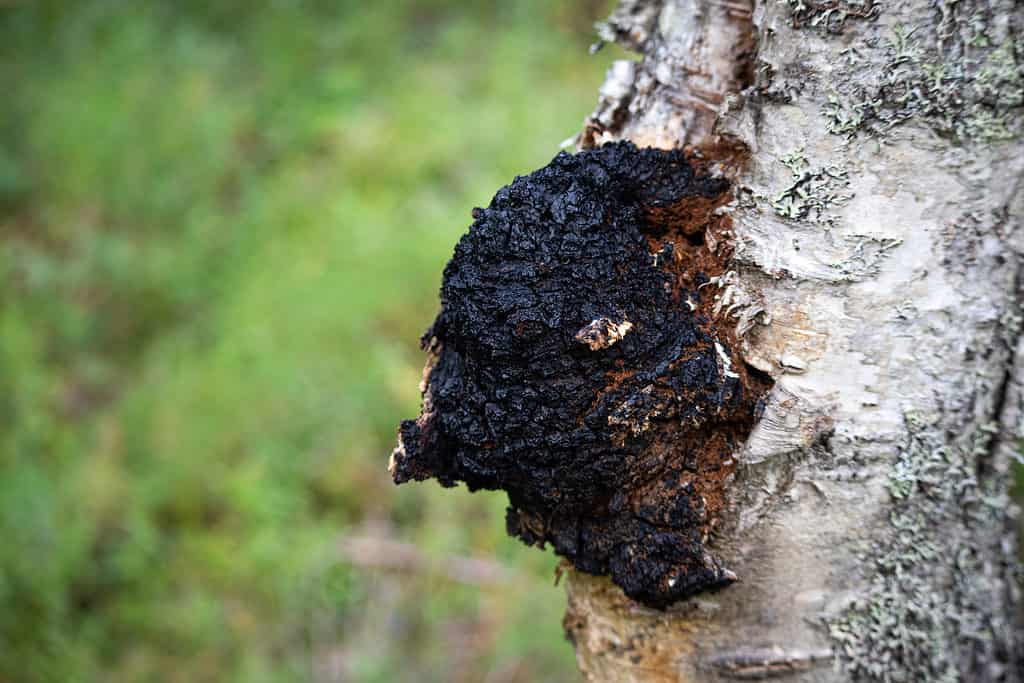
Chaga, which usually grow on the sides of living birch trees, has anti-inflammatory characteristics.
©Apatic0/Shutterstock.com
3. Porcini Mushrooms
Classification: Boletus edulis
Porcini mushrooms are a favorite among foodies due to their rustic appearance, meaty flavor, and textural addition to all kinds of recipes. The good news is that they are also good for human health.
Porcinis are a good source of antioxidants. They include lycopene, which is great for heart health. They also contain beta-carotene, which is essential for healthy eye health. Porcini mushrooms are used in a variety of cuisines. They are a very popular ingredient in Italian dishes, so you may find them on the menu the next time you’re at an Italian restaurant.

Porcini mushrooms are a favorite among foodies due to their rustic appearance and meaty flavor.
©Andrii Anna photographers/Shutterstock.com
4. Lion’s Mane Mushrooms
Classification: Hericium erinaceus
One mushroom that has drawn the attention of many scietific studies is lion’s mane. Both mental and physical health may benefit from the regular use of this fascinating fungi. It has been demonstrated in mice that this adaptogenic mushroom may help treat sleep problems, and could improve memory and increase the synthesis of nerve growth factor proteins.
If you have diabetes, lion’s mane mushrooms might be an excellent addition to your diet. It may help lower blood sugar levels. Moreover, lion’s mane could possibly be helpful in the treatment of a number of degenerative diseases, including multiple sclerosis, Alzheimer’s disease, and Parkinson’s disease.
When it comes down to it, if you’re attempting to prevent a specific ailment or maintain your general health, this scruffy-looking mushroom can offer health benefits and can be consumed as an extract or in powder form. You might also want to attempt a few lion’s mane mushroom recipes or consume fortified foods that contain lion’s mane. Choose whatever works for you!
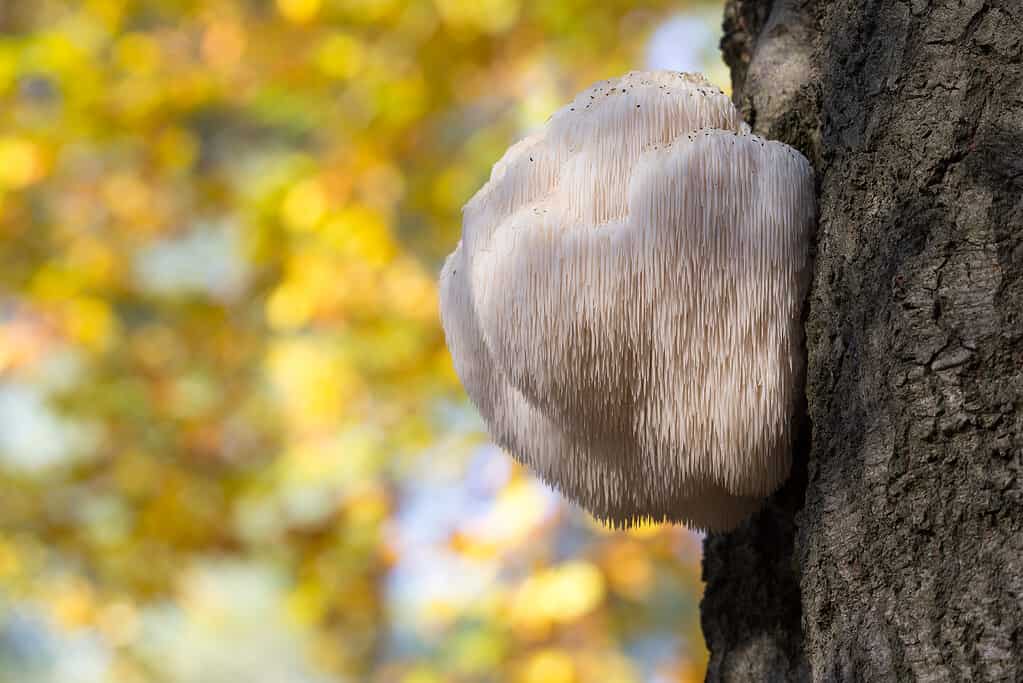
Lion’s mane can offer a variety of health benefits and be consumed as an extract or in powder form.
©Gertjan Hooijer/Shutterstock.com
5. Oyster Mushrooms
Classification: Pleurotus spp.
Everyone has heard about oyster mushrooms, and for good reason. It’s one of the easiest mushrooms to grow, and vegetarians and vegans love it as a meat substitute. This tasty mushroom is extremely versatile and can be used in many different recipes. In addition to the subtle complexity they give to many delicious meals, they may have immune-boosting properties.
As many people have been concerned about their immune systems in the past few years, it’s hardly surprising that interest in producing oyster mushrooms at home has soared. Oyster mushrooms contain nutrients that may strengthen the immune system. They can also may effectively lessen the severity of many different illnesses. Pleurotus spp. contain a natural statin that could help with cholesterol levels.
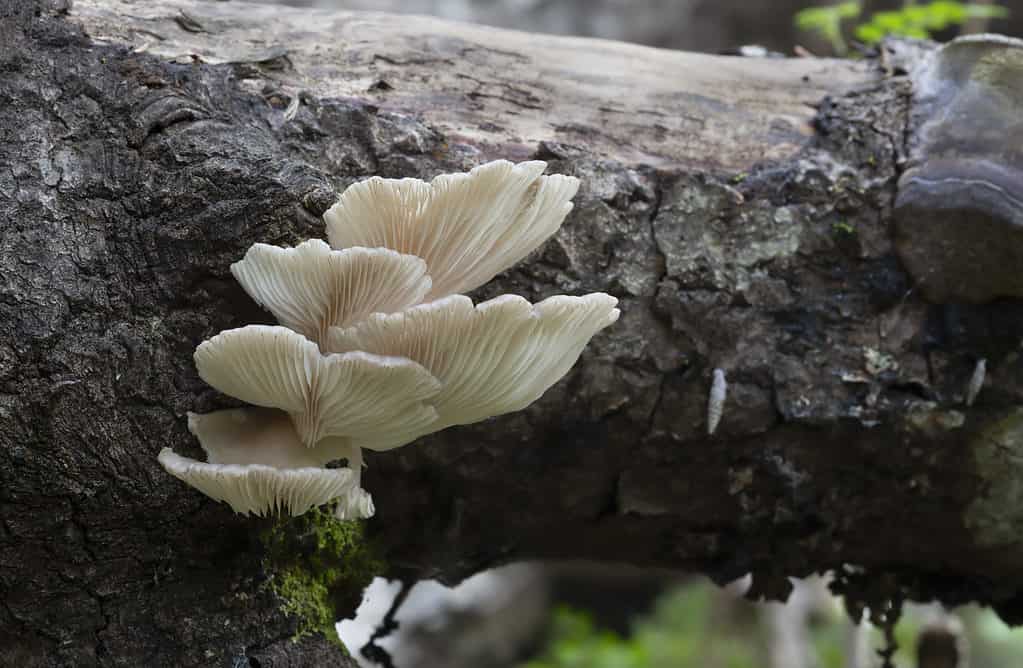
Oyster mushrooms, which have immune-boosting properties, are one of the easiest mushrooms to grow.
©iStock.com/Henrik_L
6. Reishi Mushrooms
Classification: Ganoderma spp.
Reishi mushroom polysaccharides are linked to immune system performance. Reishi mushrooms can dramatically boost the immune system if consumed over time. Moreover, it may help calm the mind, improve sleep, lessen sporadic anxiety and restlessness, support lung and respiratory health, or maintain stable blood sugar levels.
These mushrooms have been shown in one study to lower the symptom scale ratings for males with bladder dysfunction. These mushrooms can be utilized in conjunction with specific oncology treatments and diagnoses without taking on much risk. Make sure to talk to your doctor before taking reishi as a medical treatment for any ailment.
Many mycologists and herbalists refer to the reishi mushroom as the “king” of medicinal mushrooms because of its comprehensive ability to benefit a variety of bodily systems. The reishi mushroom has been mentioned in medical manuscripts dating back 2,000 years. Most notably, Chinese Taoist monks described in their writings using it to encourage serenity and to improve their meditation skills.
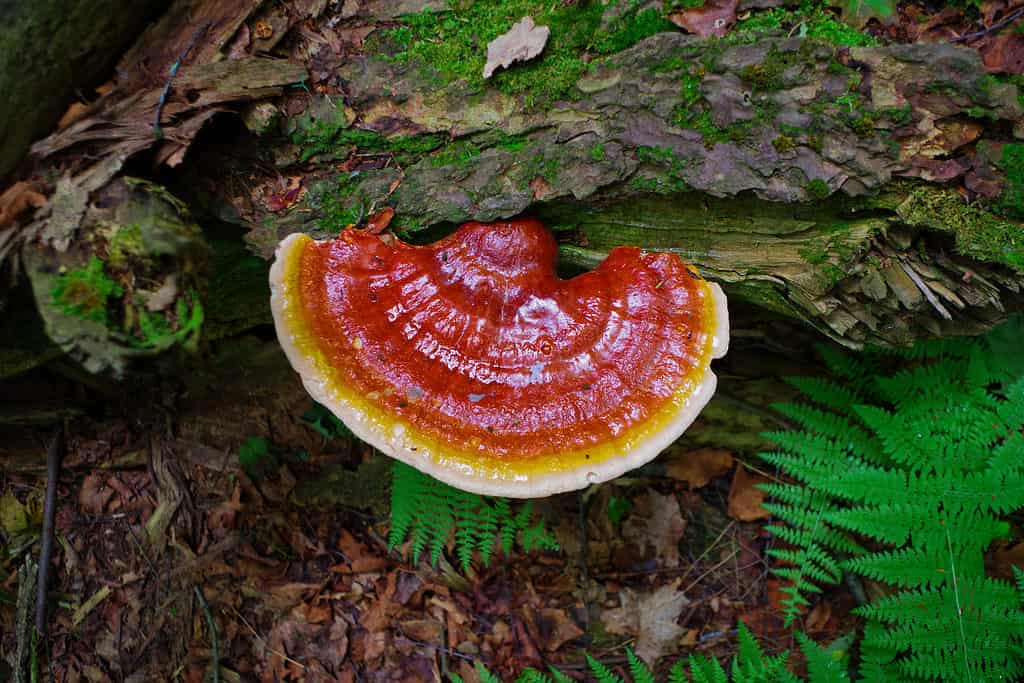
The reishi mushroom has been mentioned in medical manuscripts dating back 2,000 years.
©James Aloysius Mahan V/Shutterstock.com
7. Maitake Mushrooms
Classification: Grifola frondosa
You might know maitake mushrooms by their alternate name, the hen-of-the-woods mushroom. Some people call it sheep’s or ram’s head as well. The deciduous woodlands of Eastern North America and Japan are rich in maitake mushrooms. This species has an earthy flavor and is a palatable mushroom used in cuisine in many cultures. This mushroom is used in traditional Chinese medicine to nourish the spleen and to improve qi. Its fruiting body includes polysaccharides like beta-glucans, which have been associated with improved cell proliferation and turnover.
Since Dr. Hiroaki Nanba, a pharmacologist at Kobe Pharmaceutical University in Japan, started extracting and experimenting with various polysaccharide fractions from maitake, the mushroom gained considerable notoriety in the 1990s. Many of these fractions were strong immunomodulating substances.
By promoting the immune system’s lymphocytes, natural killer cells, monocytes, and T-helper cells, maitake mushrooms aid the proper function of the human immune system. They work well as adaptogens, assisting the body in adjusting to stress. For instance, eating some maitakes in a stir-fry for lunch could possibly help to balance your cortisol levels and get your body ready for another hectic day.
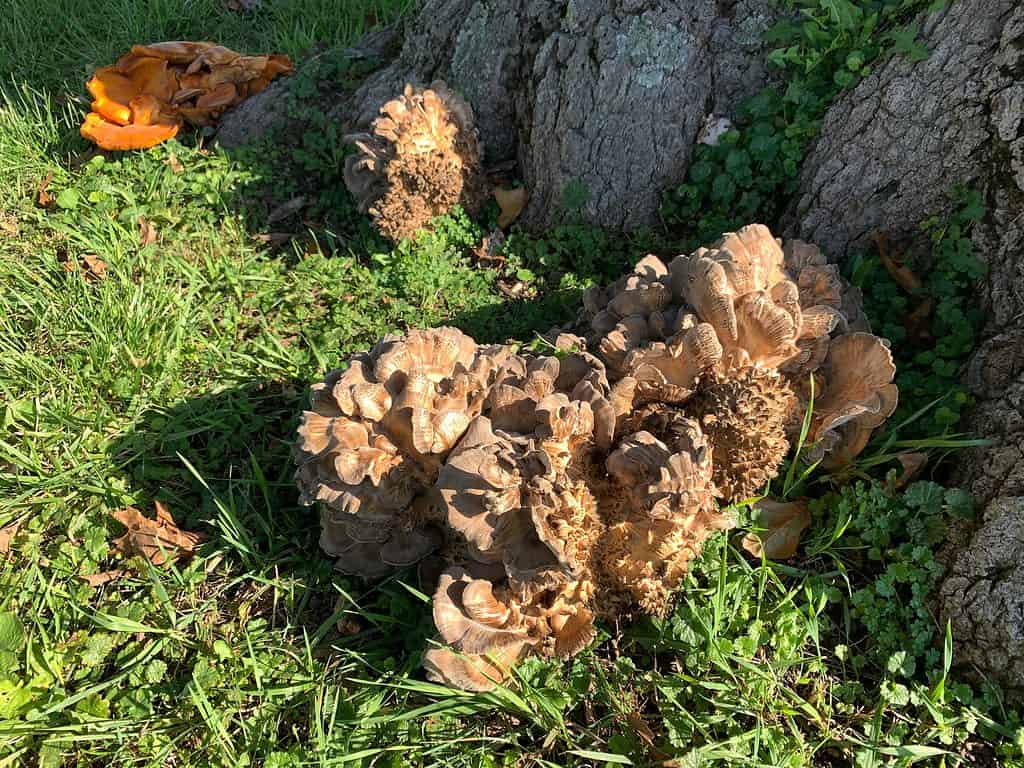
Maitake mushrooms are also known as hen-of-the-woods, sheep’s head, and ram’s head.
©CampSmoke/Shutterstock.com
8. Tremella Snow Fungi
Classification: Tremella fuciformis
Although it resembles a bath sponge, don’t be fooled by this fungi’s somewhat silly appearance. You might have found the beauty supernova you’ve been hunting for in this mushroom. This fungus is a priceless mushroom from China that has been used for centuries. It was originally only accessible to royalty or the rich who could buy it due to its scarcity in the wild. Tremella snow fungi have been used by TCM practitioners for thousands of years as a yin tonic to support health, long life, and beauty. Moreover, it has been used to soothe sore throats and dry coughs.
Similar to hyaluronic acid in its intensive moisturizing abilities, the special polysaccharides found in the Tremella snow fungus possibly provide anti-aging benefits without the need for synthetic ingredients. These polysaccharides may permeate the skin more efficiently since they are smaller than the molecules of hyaluronic acid.
According to one study, topical treatments containing polysaccharides from this species retained moisture more effectively than those containing hyaluronic acid. While the mechanism underlying these benefits is yet unknown, these fungi demonstrate strong antioxidant, anti-aging, immune-boosting, gut-nourishing, and neuroprotective qualities in addition to their extraordinary hydration characteristics.
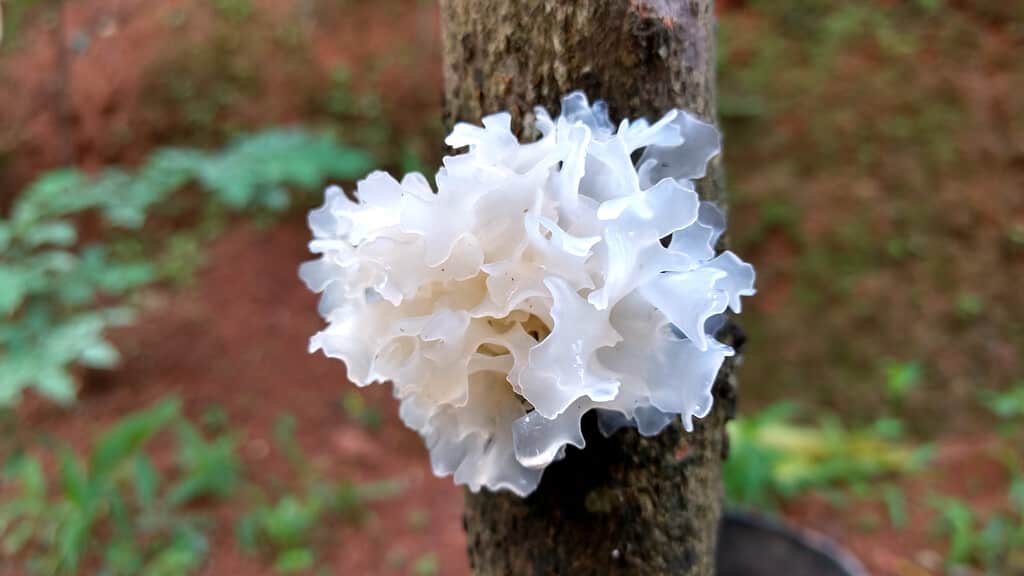
Due to its scarcity in the wild,
Tremella fuciformiswas originally only used by royalty and rich people.
©Ashish Sayani/Shutterstock.com
9. Morel Mushrooms
Classification: Morchella spp.
Many mushroom enthusiasts view morels as a true pleasure and a tasty treat among mushrooms. They add a distinctive, earthy taste to whatever dish you put them in.
When you consume morels, you gain from the taste as well as tremendous advantages for your health. Morel mushrooms are considered a great supplement for bone health because they are rich in calcium. Regular use of morel mushrooms may aid in preventing osteoporosis and other disorders that weaken bones.
High levels of potassium, vitamins, and copper found in morel mushrooms all support a healthy heart. Of all edible mushrooms, morels are recognized to have high concentrations of vitamin D as well.
Unfortunately, morels are difficult to find at local grocers. You can try your luck by searching for these mushrooms at farmers’ markets or searching for dried morels online. When all else fails, it might be worth trying to forage for these beauties.

When they can be found, morel mushrooms add a distinctive, earthy taste to dishes.
©Mircea Costina/Shutterstock.com
10. Cordyceps Mushrooms
Classification: Cordyceps spp. and similar
If you’re concerned about your risk of cancer, cordyceps may be among the healthiest mushrooms to consume. The cordycepin found in this mushroom could potentially slow or even prevent the development of cancer cells. Research on the advantages of the polysaccharides present in cordyceps for breast and colon cancer is very encouraging, and they also have significant potential to combat cancer.
These mushrooms could also be a terrific addition to your diet if you’re an athlete. A natural energy booster, the cordyceps fungus increases your ability to absorb oxygen and produce adenosine triphosphate. Regular usage of this anti-inflammatory fungus can increase your stamina and hasten the recovery process after intensive activity.

Cordyceps are known for having a parasitic relationship with insects such as caterpillars. Don’t let that turn you off!
©charnsitr/Shutterstock.com
11. Shiitake Mushrooms
Classification: Lentinula edodes
The shiitake mushroom may help strengthen the cardiovascular system and could be good for immunity and liver health. Shiitake mushrooms contain a polymer called lentinan, which has shown considerable promise as an immune system stimulant. These unique mushrooms contain a substance called eritadenine that has been shown in studies to help maintain cholesterol levels that are already within a healthy range.
Shiitake mushrooms are one of the most popular culinary mushrooms in the world and have a meaty, adaptable flavor, which accounts for their long history of usage as a food source in Asia. These B-vitamin-rich, delicious cooking mushrooms may assist regulating blood sugar levels in the body and may support a healthy inflammatory response.
It has been demonstrated that shiitake mushrooms stimulate important immune cells linked to our body’s first line of defense when it comes to immunity. Shiitake mushrooms have the ability to lower C-Reactive protein (or CRP), a blood indicator of inflammation. Simply put, this mushroom is considered by some to be a force to be reckoned with when it comes to the immune system.
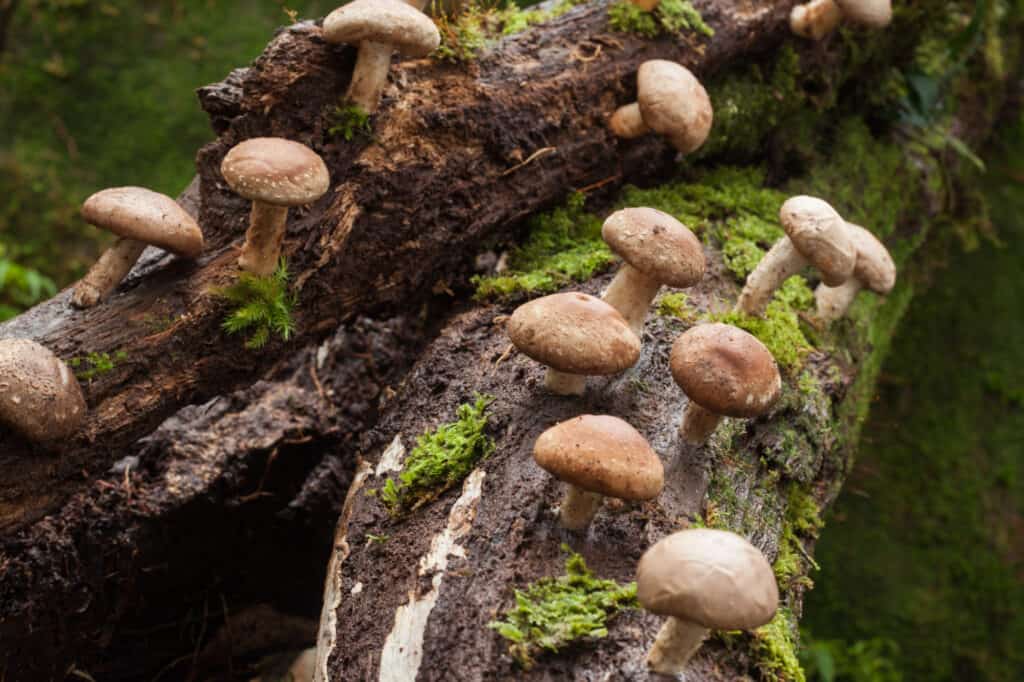
One of the world’s most popular culinary mushrooms, shiitake mushrooms grow alone or in groups on tree trunks.
©puttography/Shutterstock.com
12. Chanterelle Mushrooms
Classification: Cantharellus genus
Chanterelle mushrooms stand out for their vivid, golden colors, in contrast to the majority of neutral-colored edible mushrooms. These mushrooms can not be grown at home. As a result, these mushrooms are often foraged for in the wild. They are renowned for having a distinctive flavor that is fruity to peppery and tangy. The golden-yellow chanterelle has a lovely appearance on a plate and gives any dish a unique flavor.
As befits their bright hue, chanterelles are renowned for being incredibly high in vitamin D. One’s health can seriously suffer from a vitamin D deficiency, which can cause fatigue, recurrent illnesses, hair and bone density loss, aches and pains, and even depression. As a result, chanterelle mushrooms are a great source of this vitamin and could possibly be used as a daily supplement.
Chanterelle mushrooms are a great source of polysaccharides like chitin and chitosan. These two substances encourage the immune system to make more cells while protecting your existing cells from harm. Also, they have a reputation for assisting in the reduction of inflammation and the danger of several illnesses. Moreover, chanterelles include fatty acids, phenolic acid compounds, beta-glucans that function as intestinal prebiotics, roughly 15 different distinct amino acids, and other health-promoting polysaccharides.

Chanterelle mushrooms are known for their vivid color and often need to be foraged for in the wild.
©muuraa/Shutterstock.com
13. Turkey Tail Mushrooms
Classification: Trametes versicolor
One of the most popular and common mushrooms in many places worldwide is the turkey tail mushroom. It spreads globally on dead logs. It is named for the way its rings of brown and tan appear like a turkey’s tail feathers. If you live near a forested area, you might have spotted a turkey tail mushroom at some point.
The turkey tail mushroom may stimulate cytokine synthesis, upregulate natural killer cells, and perform other immuno-stimulating activities to enhance immune function. The immune-supportive properties of turkey tail mushrooms are best supported by research on protein-bound polysaccharides or PBPs.
Most of the more conclusive studies on this mushroom show its effectiveness in conjunction with chemotherapy. Long-term usage of turkey tail mushrooms should be considered safe when combined with appropriate medical care, but always discuss with your doctor before using any mushroom as a medication or dietary supplement.
Turkey tail mushrooms have been used for centuries in traditional Chinese medicine. They are used to boost vitality, regulate bodily fluids, and improve lung function. A turkey tail mushroom derivative has been utilized to boost the human immune system in China and Japan. The turkey tail mushroom has one of the highest concentrations of beta-glucans of any fungus and when consumed regularly, it may help support a strong immune system.
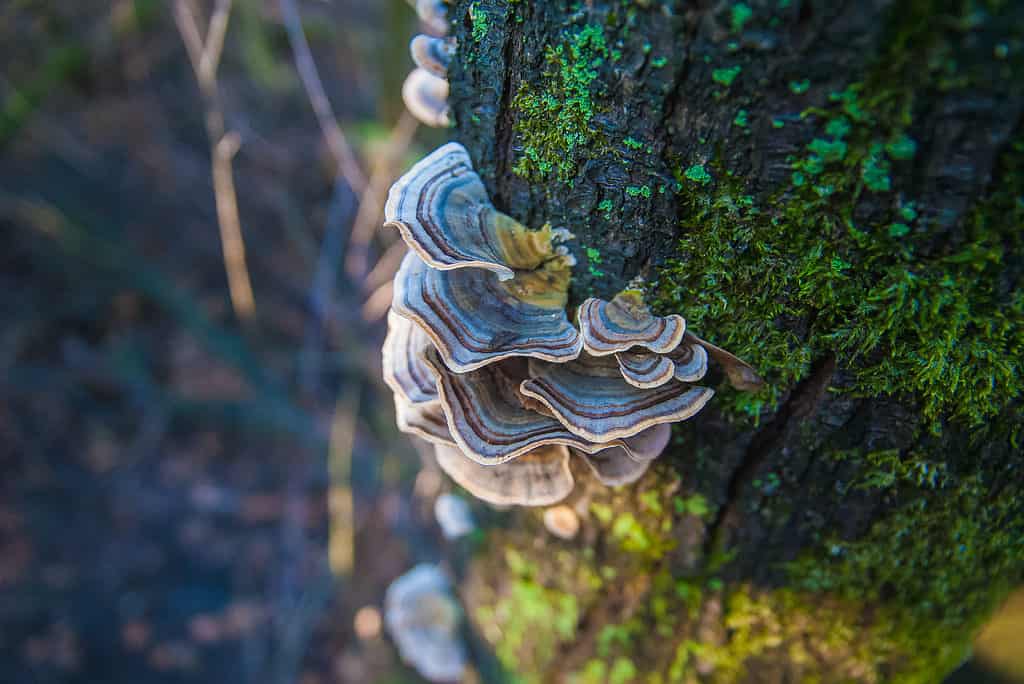
Turkey tail mushrooms have been used for centuries in traditional Chinese medicine.
©Slobodan Cvetkovic/Shutterstock.com
14. Black Truffles
Classification: Tuber melanosporum
There’s a good possibility that you’ve heard of black truffles, even if you don’t know much about mushrooms. These mushrooms have a rich flavor that complements various seasonings and butter. You may have heard of truffle oil as well, but sadly most truffle oils contain no actual truffles. Fortunately, this is one occasion where a tasty food item is also very healthy. Specifically, black truffles are beneficial to your mental health as well as your overall body health.
According to studies, black truffles can improve your mood in similar ways to marijuana without giving you a “high.” Moreover, black truffles have a remarkable nutritious profile and are rich in several essential vitamins and minerals.
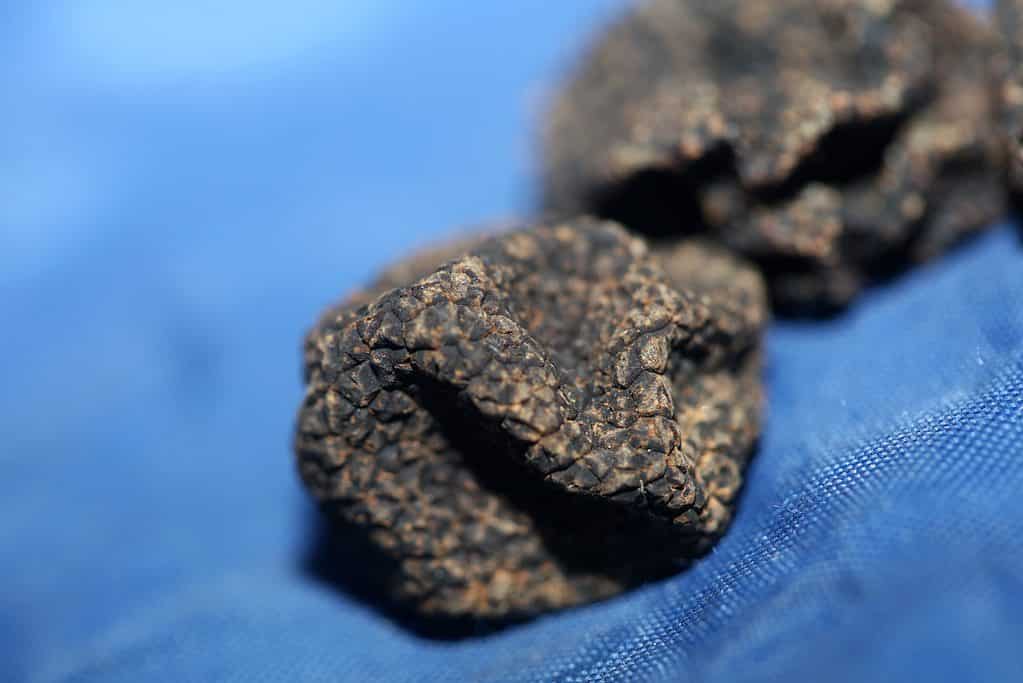
Black truffles may look unappealing, but they have a rich flavor that complements various seasonings and butter.
©BakalaeroZz Photography/Shutterstock.com
Summary of 14 Types of Healthy Mushrooms
Here’s a recap of the 14 mushrooms we took a look at that are considered to have a diverse range of health benefits.
| Rank | Mushroom | Classification |
|---|---|---|
| 1 | Button Mushrooms | Agaricus bisporus |
| 2 | Chaga Mushrooms | Inonotus obliquus |
| 3 | Porcini Mushrooms | Boletus edulis |
| 4 | Lion’s Mane Mushrooms | Hericium erinaceus |
| 5 | Oyster Mushrooms | Pleurotus spp. |
| 6 | Reishi Mushrooms | Ganoderma spp. |
| 7 | Maitake Mushrooms | Grifola frondosa |
| 8 | Tremella Snow Fungi | Tremella fuciformis |
| 9 | Morel Mushrooms | Morchella spp. |
| 10 | Cordyceps Mushrooms | Cordyceps spp. and similar |
| 11 | Shiitake Mushrooms | Lentinula edodes |
| 12 | Chanterelle Mushrooms | Cantharellus genus |
| 13 | Turkey Tail Mushrooms | Trametes versicolor |
| 14 | Black Truffles | Tuber melanosporum |
The information presented on or through the Website is made available solely for general informational purposes. We do not warrant the accuracy, completeness, or usefulness of this information. Any reliance you place on such information is strictly at your own risk. We disclaim all liability and responsibility arising from any reliance placed on such materials by you or any other visitor to the Website, or by anyone who may be informed of any of its contents. None of the statements or claims on the Website should be taken as medical advice, health advice, or as confirmation that a plant, fungus, or other item is safe for consumption or will provide any health benefits. Anyone considering the health benefits of particular plant, fungus, or other item should first consult with a doctor or other medical professional. The statements made within this Website have not been evaluated by the Food and Drug Administration. These statements are not intended to diagnose, treat, cure or prevent any disease.
Thank you for reading! Have some feedback for us? Contact the AZ Animals editorial team.








